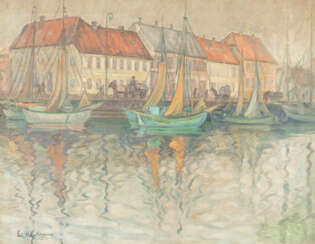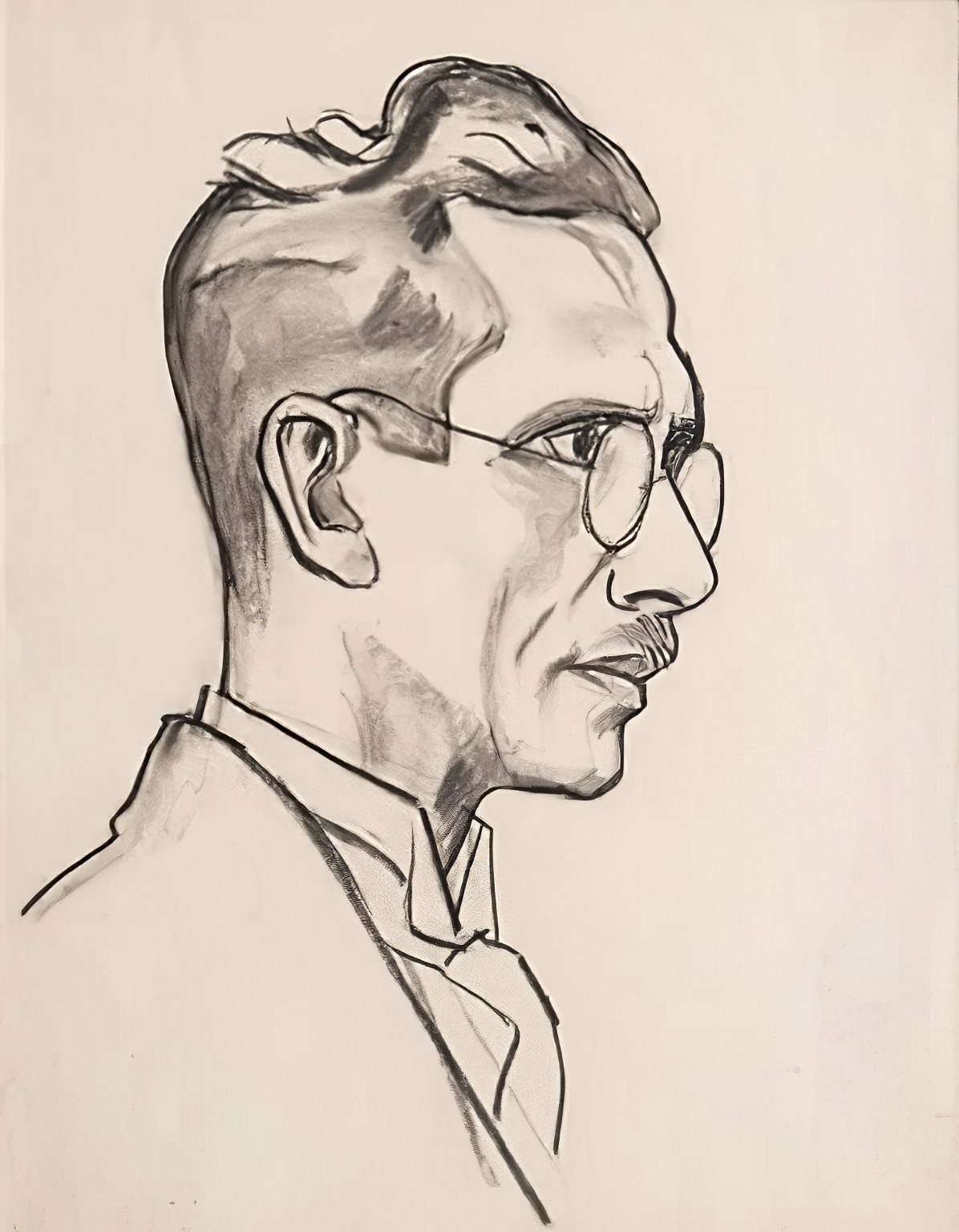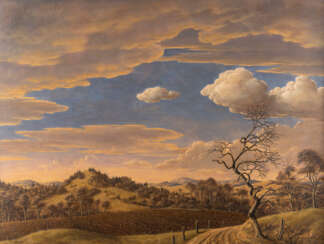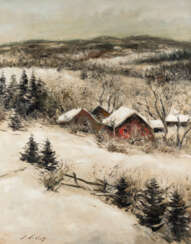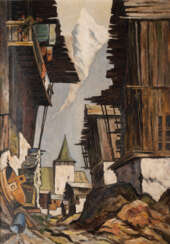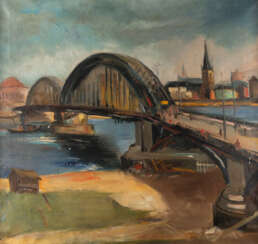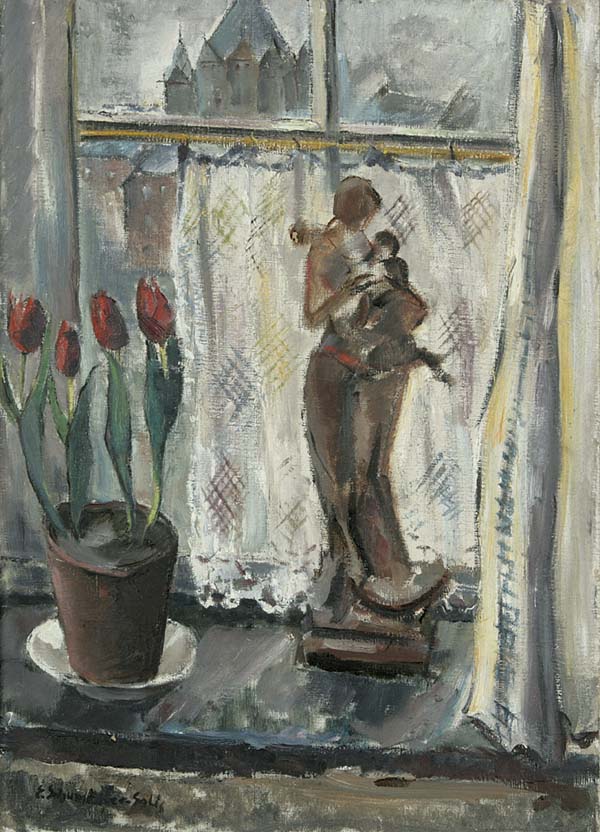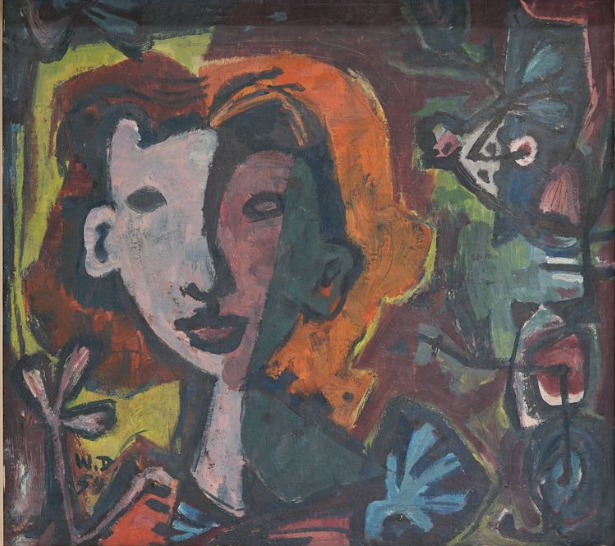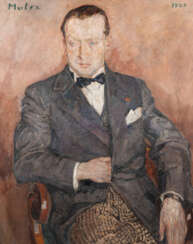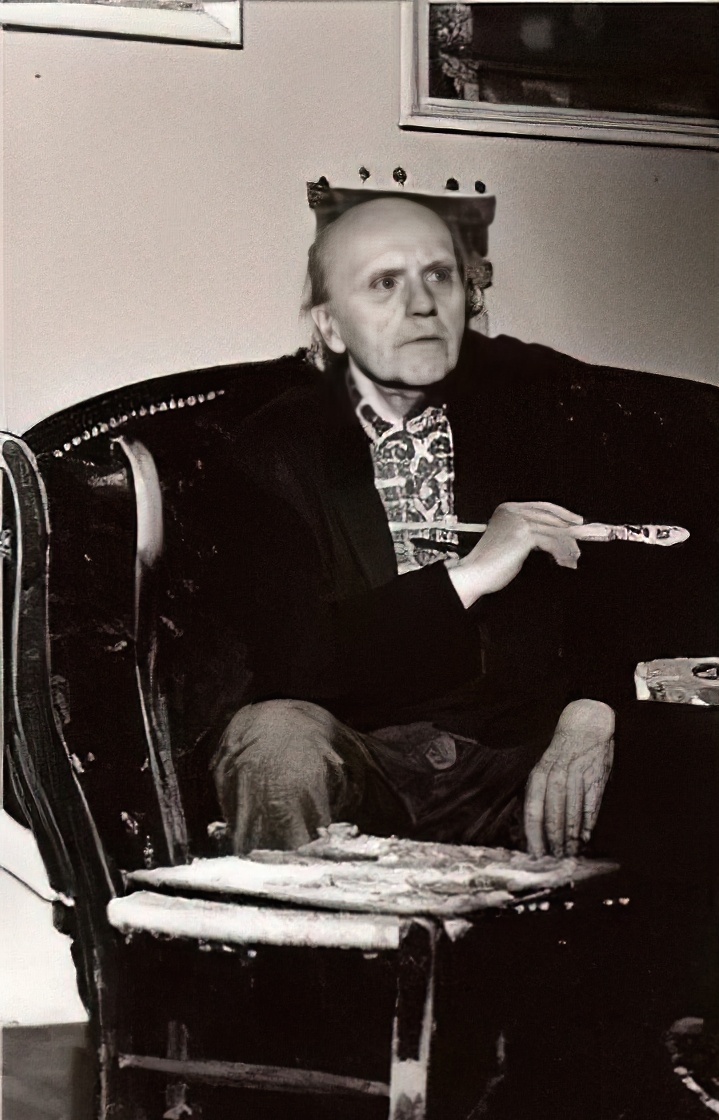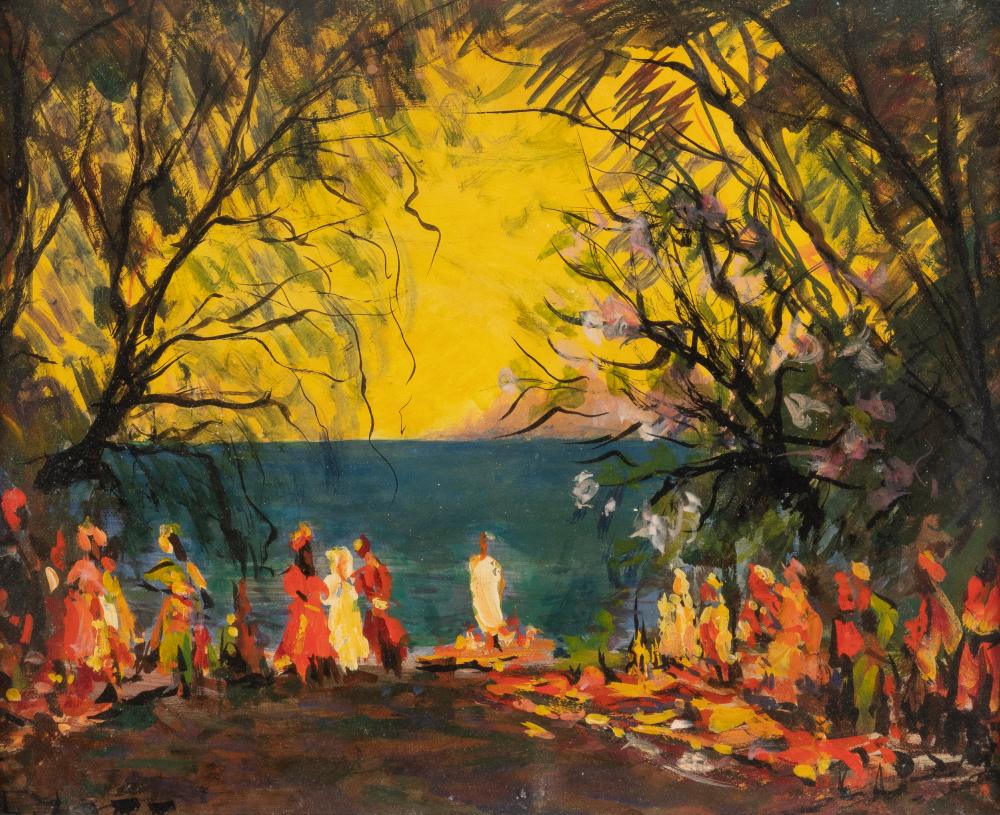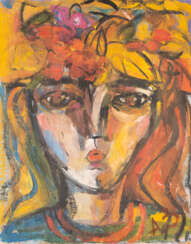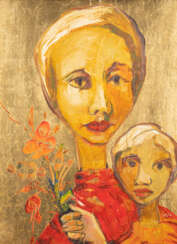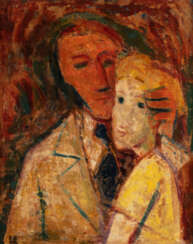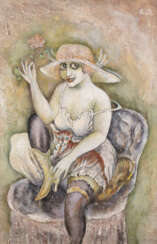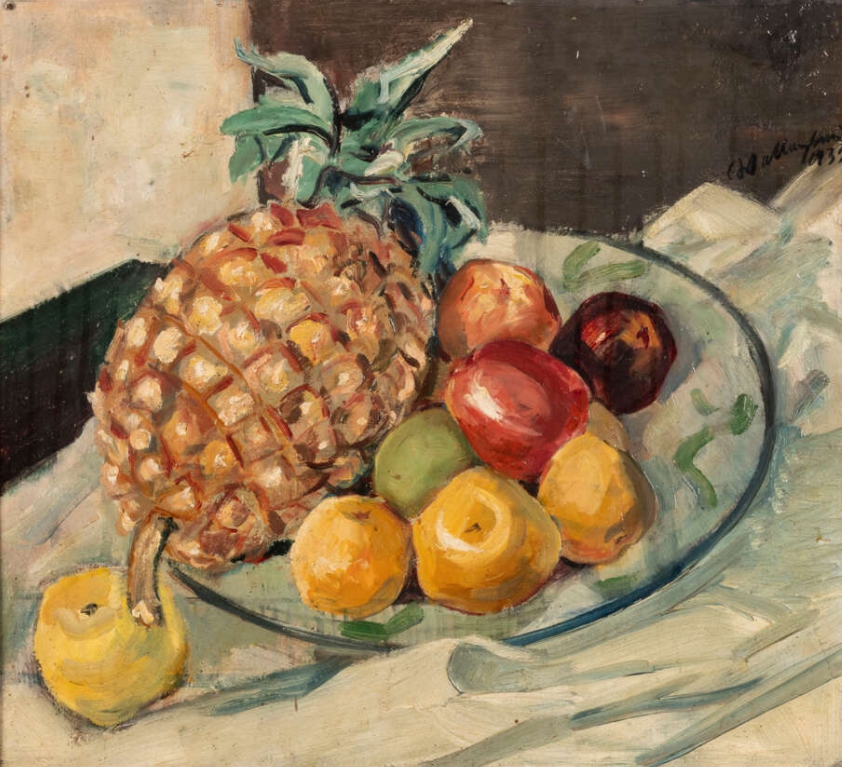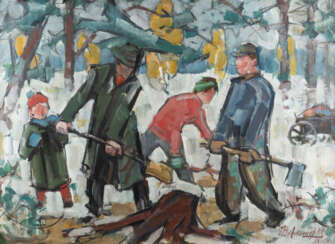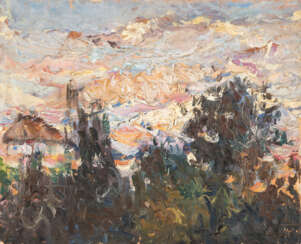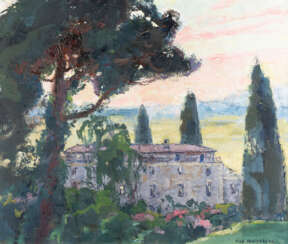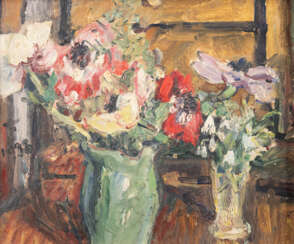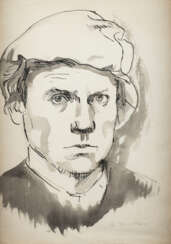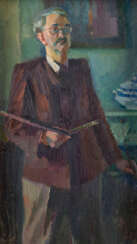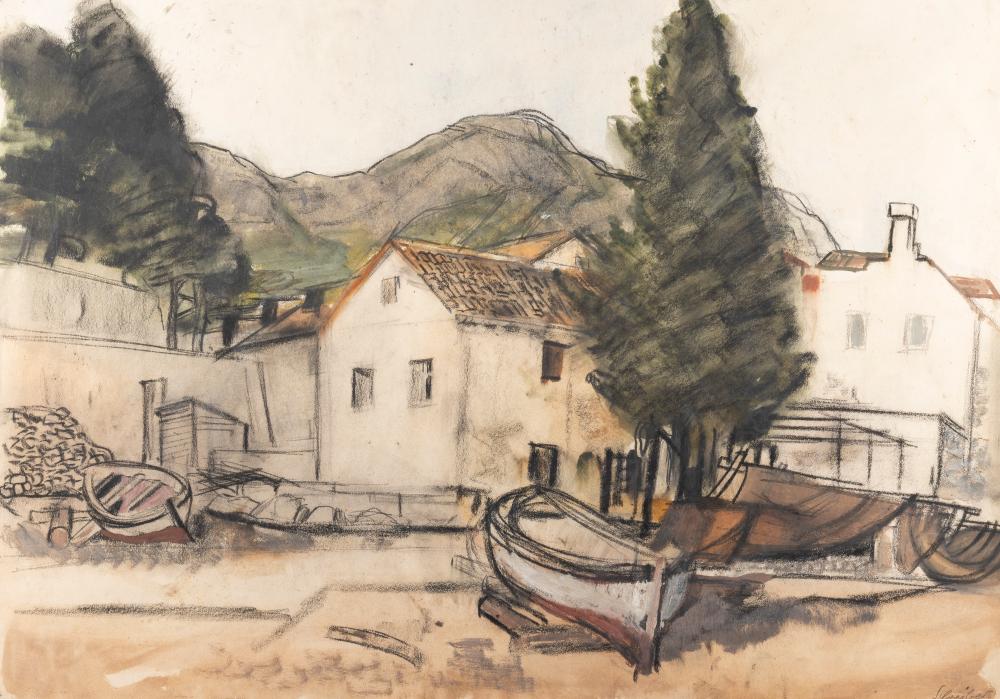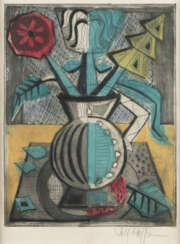
Modern paintings — 129: Modern Kunst
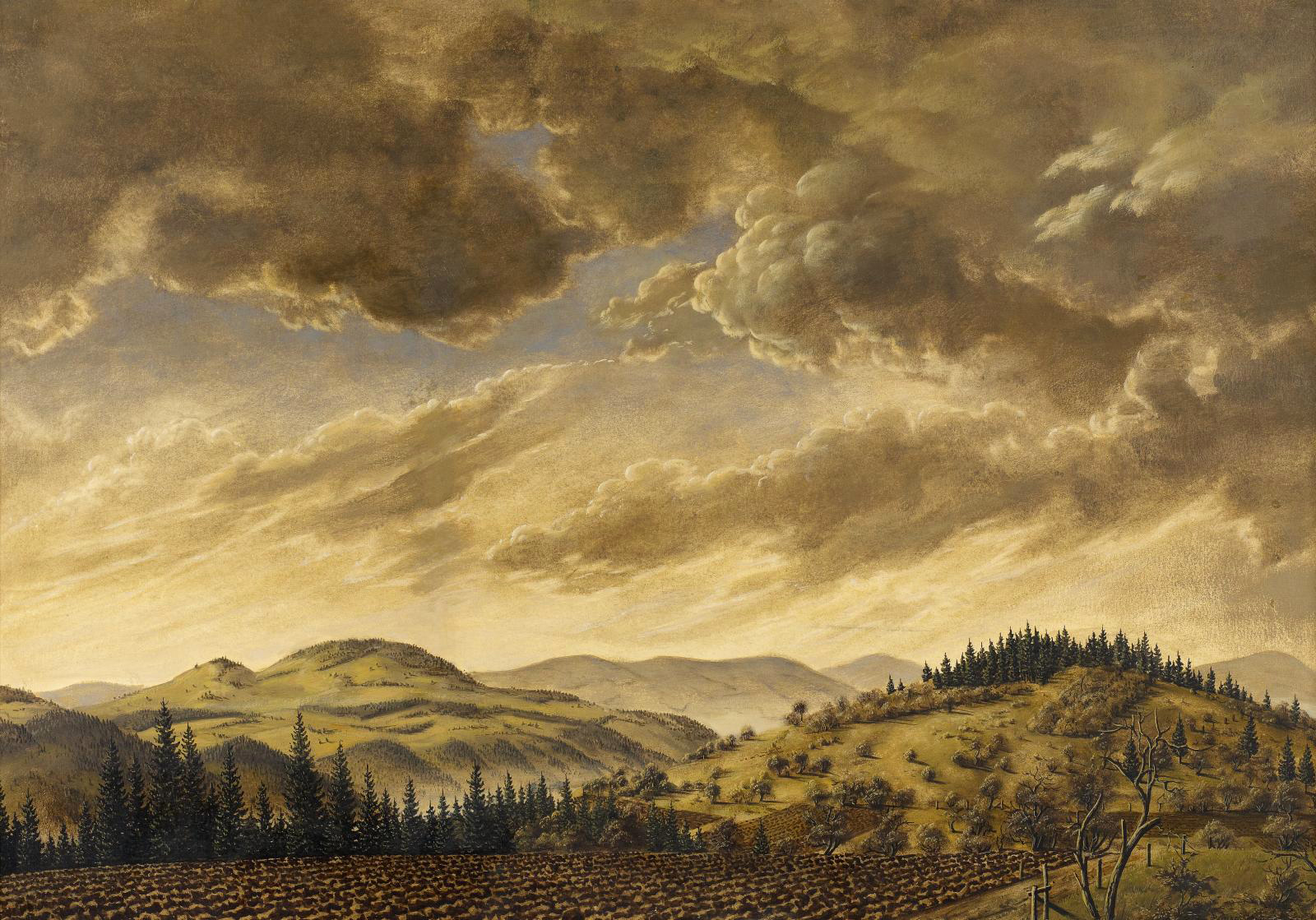
Werner Peiner was a German painter. He was first influenced by realism, and later by New Objectivity, but he would become known has one of the most talented official painters of the Third Reich.
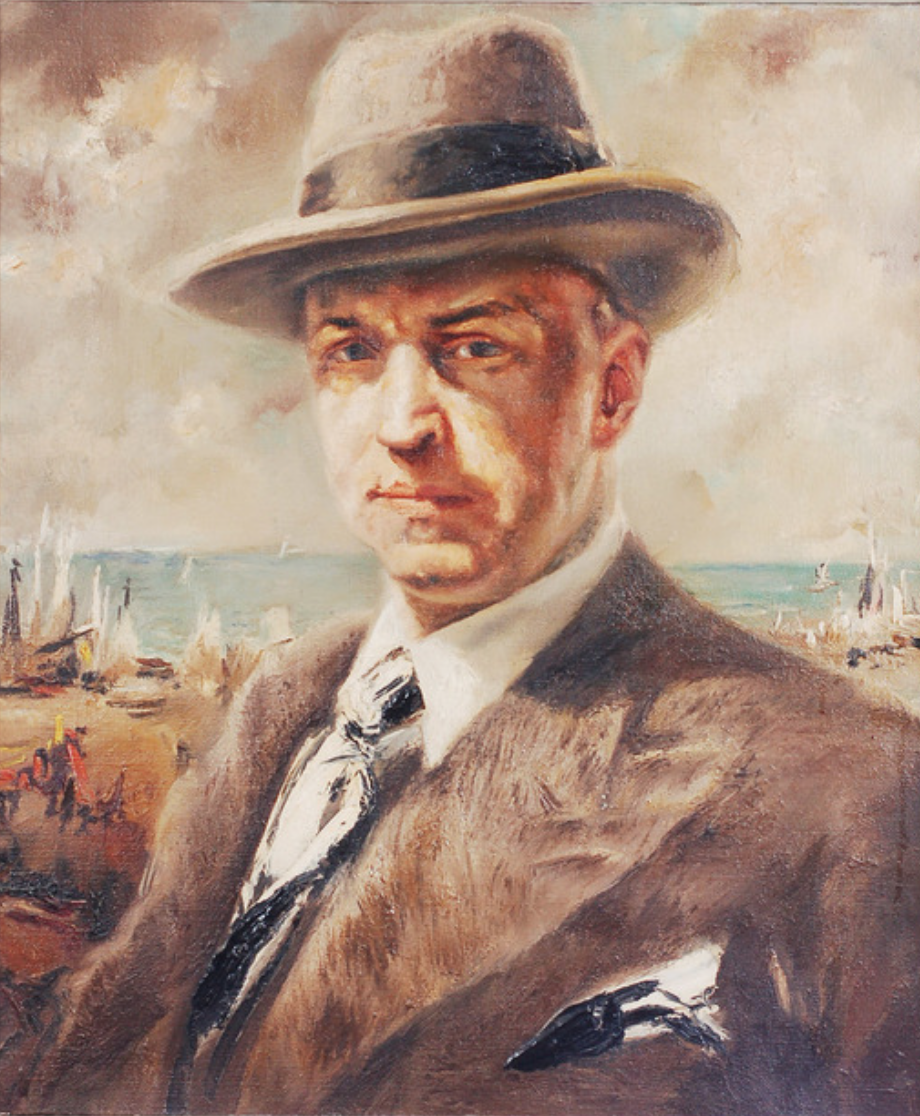
Ludolfs Liberts was a Latvian painter and stage designer who was chairman of the Sadarbs Society of Artists and was a member of the Riga group of artists. The most important part of his work was scenography. Liberts also painted Latvian landscapes, but his views of Paris and depictions of Venetian palaces, squares and canals became popular. He also created many portraits.
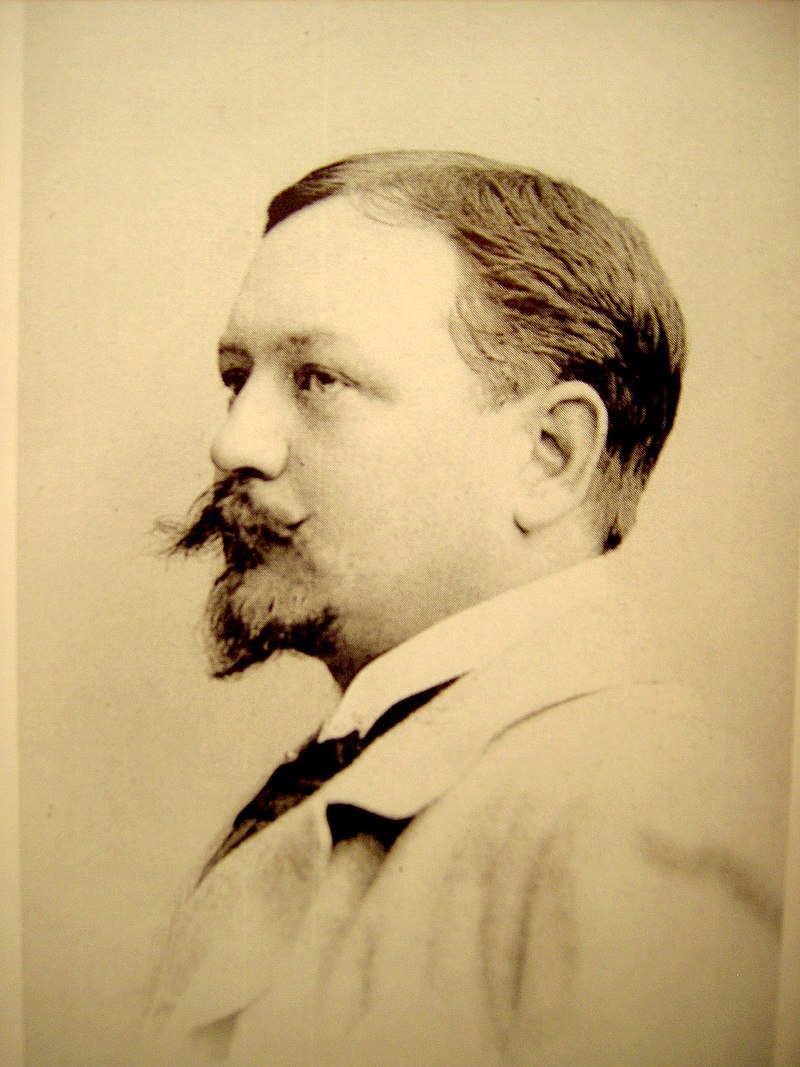
Fritz von Wille, real name Friedrich Gustav August Julius Philipp Rudolf von Wille is a German painter, member of the Malkasten group.
Fritz von Wille is known for his landscapes in the Impressionist style. To avoid confusion with his father, the painter August von Wille, he took a short name. His son Otto (1901-1977) also became a painter.
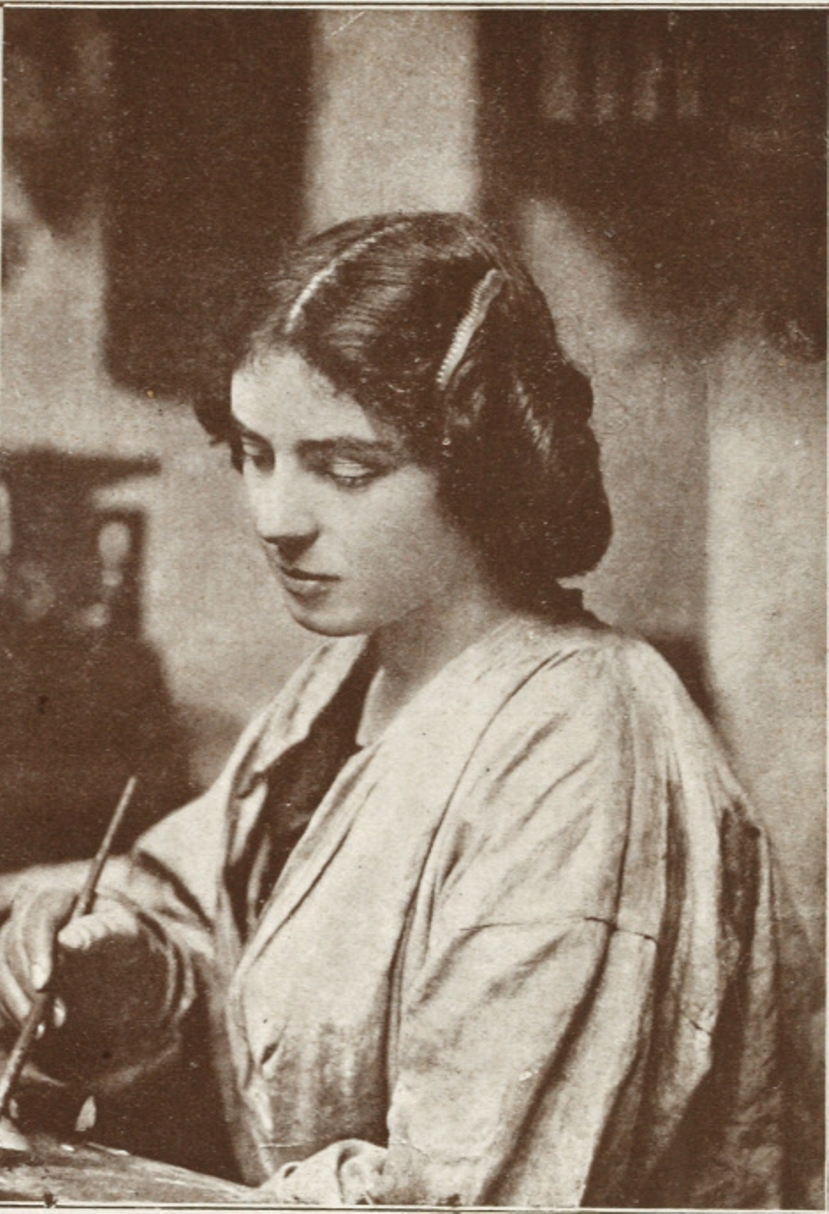
Mela Muter, real name Maria Melania Mutermilch, was a Polish-born Jewish artist who spent most of her life in France.
At the age of 25, in 1901, she moved to Paris with her husband and became known as a modernist painter. Her work was influenced by Paul Cézanne, Paul Gauguin and Vincent van Gogh. Muter painted mainly portraits, landscapes and still lifes.
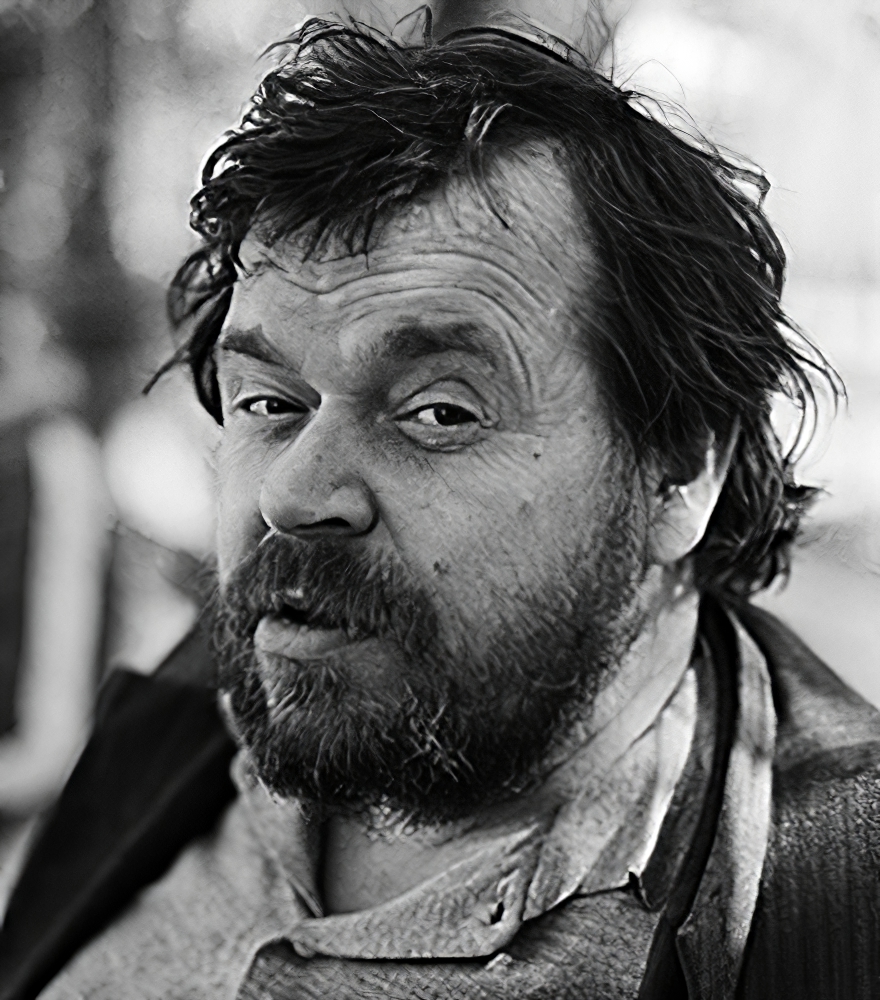
Anatoly (Anatoli) Timofeevich Zverev was a Russian artist, a member of the non-conformist movement and a founder of Russian Expressionism in the 1960s. He spent all of his life in Moscow.
He did not have a solo show in Russia until shortly before his death in 1986 and his work was exhibited in small, underground galleries. Throughout his career he was harassed and persecuted by the Soviet authorities especially as his international success grew.
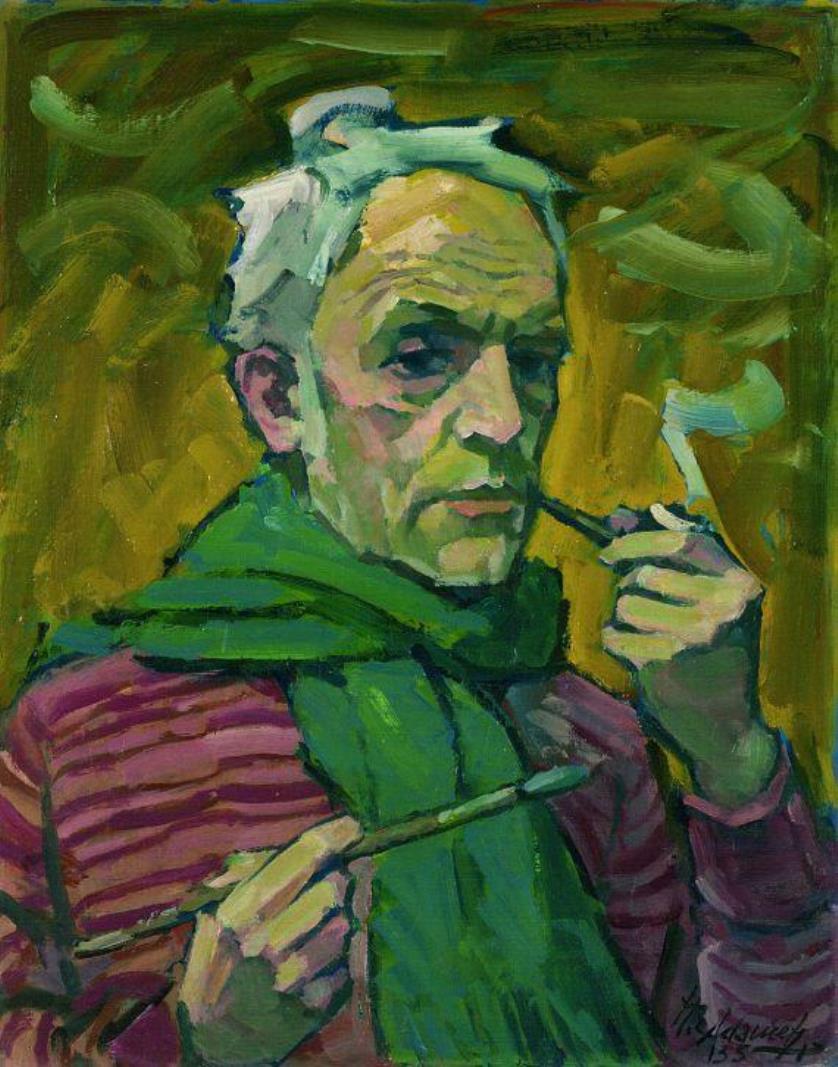
Heinrich Emil Adametz was a German expressionist painter.
Adametz studied in Hamburg and at the Academy of Fine Arts in Stuttgart. Influenced by Expressionism, he painted portraits, seascapes with ships, and still lifes. Later, the events of World War II took such a heavy toll on the artist's family that he was unable to recover from them for the rest of his life.
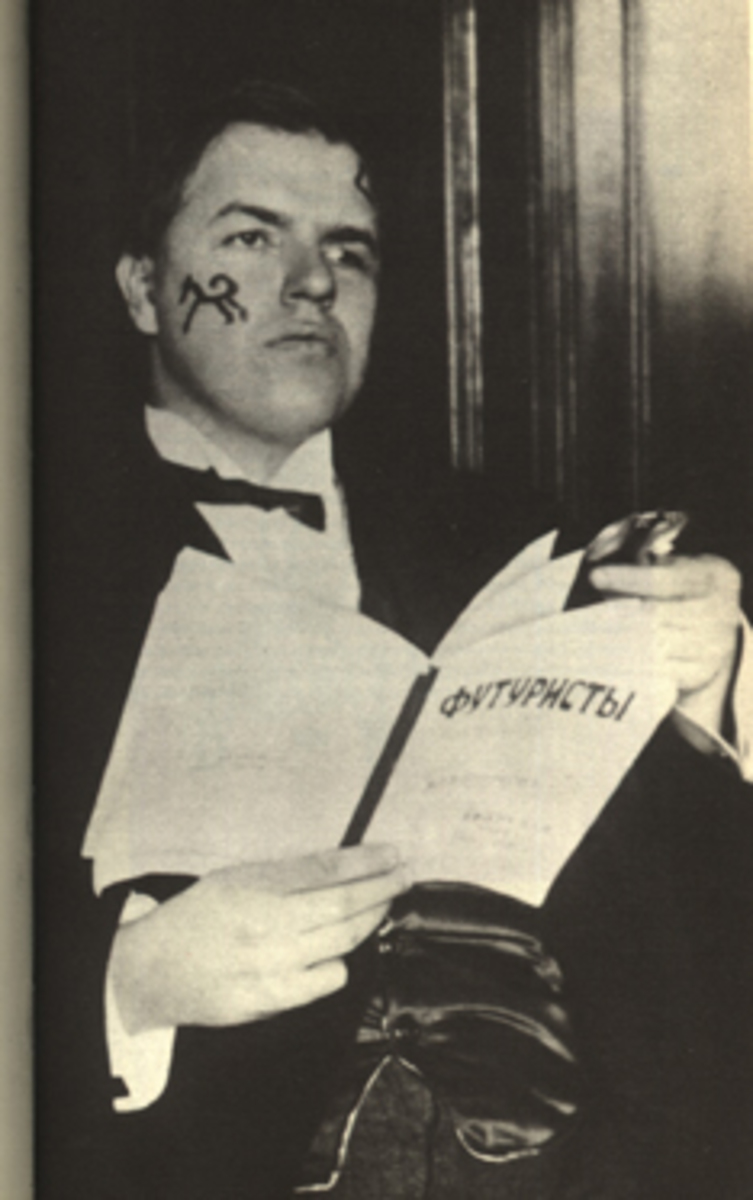
David Davidovich Burliuk (Russian: Давид Давидович Бурлюк), a pioneering figure of the Russian Futurist movement, was a Ukrainian poet, artist, and publicist, born in 1882 in Semirotovshchina, Kharkov, Ukraine, and died in 1967 on Long Island, N.Y., U.S. Known for his eclectic contributions that spanned poetry, painting, criticism, and publishing, Burliuk's work was instrumental in introducing the Russian avant-garde to Europe and the United States. Despite having a lesser volume of work in poetry and painting compared to his contemporaries, Burliuk's knack for discovering talent and promoting it was unparalleled. He was among the first to publish the works of Velimir Khlebnikov and to recognize the genius of Vladimir Mayakovsky, significantly contributing to their renown.
Burliuk's artistic journey was marked by his involvement with the Futurist and Neo-Primitivist movements. His early work, including an exhibition with the group Zveno ("The Link") in Kiev in 1908 and his participation in the Hylaea group, set the stage for his later achievements. He was a co-author of the influential Futurist manifesto "A Slap in the Face of Public Taste" in 1912, advocating for a break from traditional art forms and the embrace of modernity. Burliuk's commitment to Futurism was evident in his publishing endeavors and his collaborations with notable artists of the time.
In his later years, after emigrating to the United States in 1922, Burliuk continued to engage with the art world, contributing to pro-Soviet groups and publishing his works and those of his contemporaries. His efforts were recognized in several exhibitions, including a significant show at the Brooklyn Museum's 1926 International Exhibition of Modern Art. Despite facing challenges, such as being denied permission to visit his homeland by the Soviet government, Burliuk's influence remained steadfast. His legacy as a central figure in Russian Futurism and his contributions to the broader art movement are celebrated to this day.
To stay informed about updates and events related to David Davidovich Burliuk, including sales of his works and auction events, sign up for our newsletter. This subscription will ensure you're the first to know about new discoveries and opportunities to engage with Burliuk's enduring legacy.
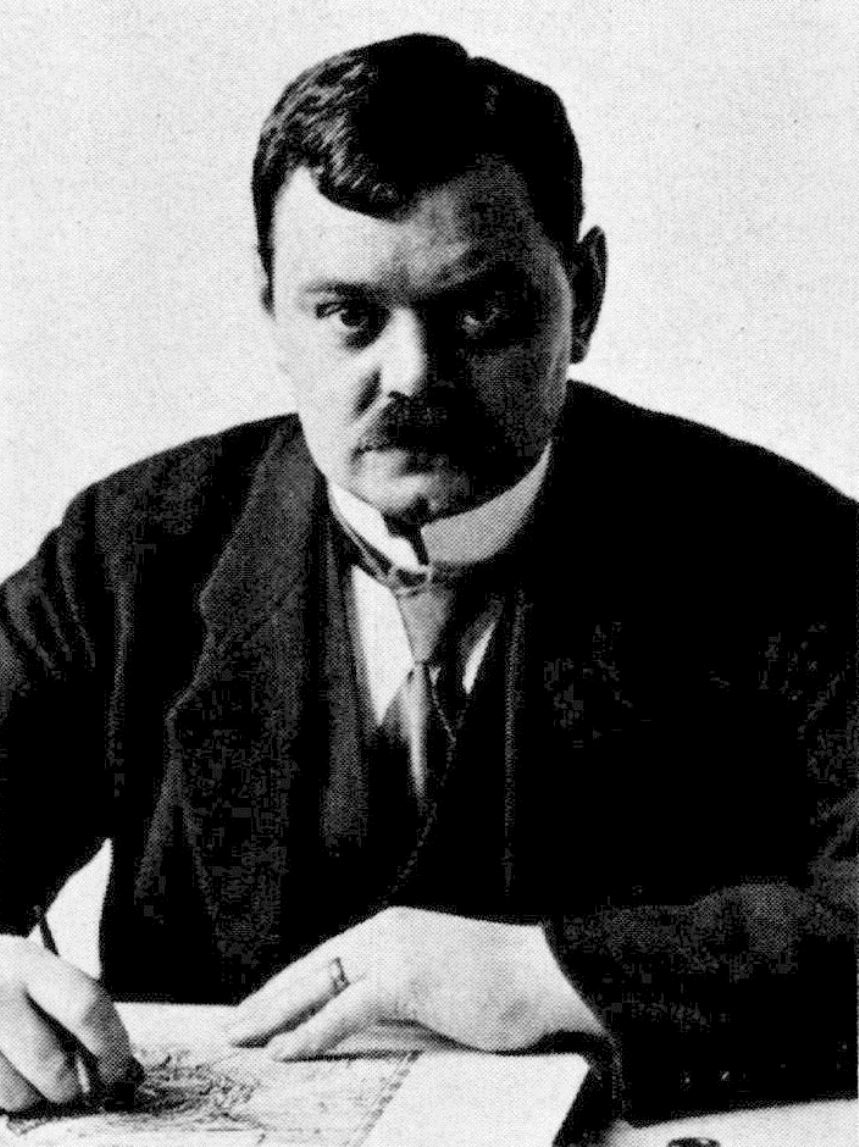
Olle Hjortzberg, or Gustaf Olof Hjortzberg, is a Swedish painter, illustrator, and designer.
He studied at the Swedish Royal Academy of Arts, then traveled to Palestine, Syria and Greece.
Hjortzberg is known primarily as the author of colorful floral still lifes, but he also painted St. Katharina's Church in Stockholm and the cathedral in Uppsala and was a professor at the Royal Academy of Fine Arts. The artist illustrated the Bible and drew posters and stamps.
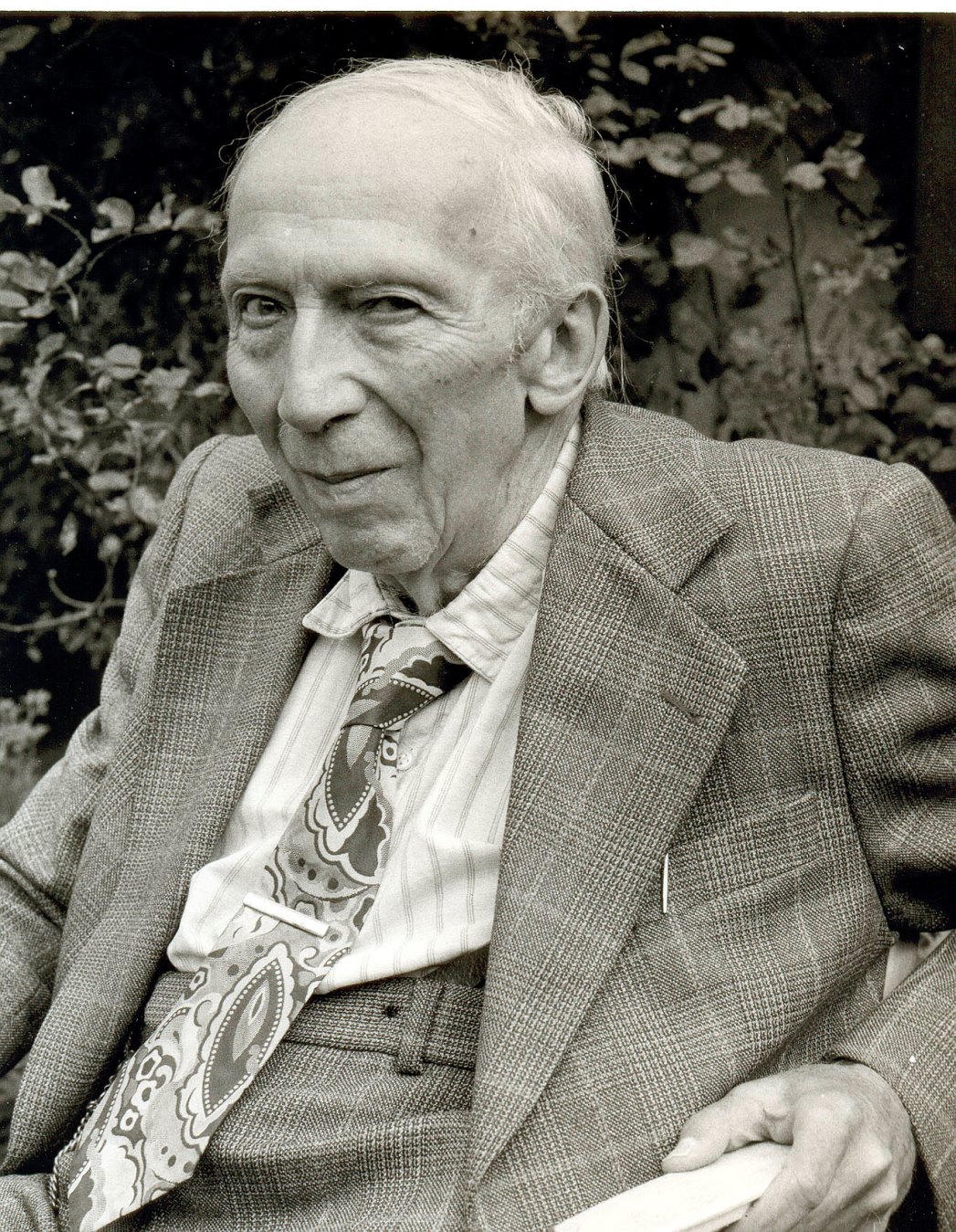
Franz Frank was a German painter.
He studied painting at the Stuttgart Academy of Fine Arts. Frank created many still lifes and landscapes, as well as sketches of everyday life and animals. He exhibited at the Academy in Stuttgart and the Dresden Art Association, and from 1928 he participated regularly in the exhibitions of the association Die Juryfreien in Berlin. Franz Frank took part in an exhibition of the Berlin Secession in 1932, but then the outbreak of the Second World War changed his whole life and he almost never returned to painting again.
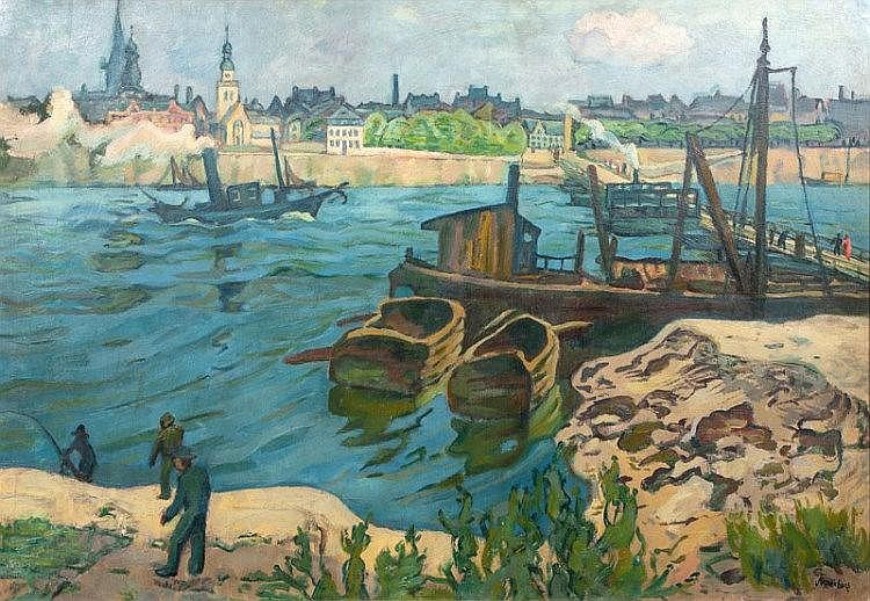
Josef P. Kronenberg was a German painter who painted portraits, landscapes, and still lifes in an expressive style.
He studied in Düsseldorf and later worked in Munich.
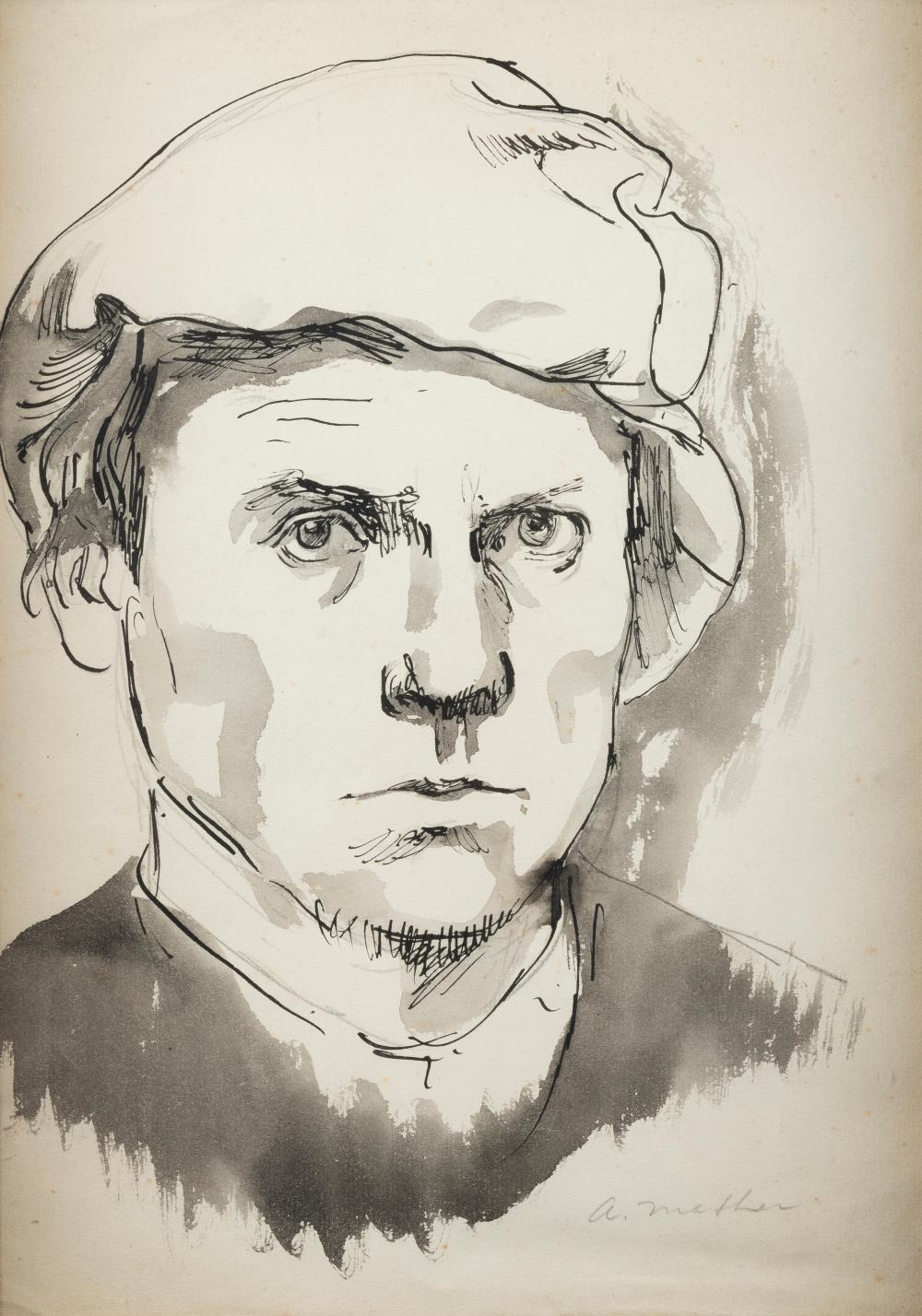
Arvid Mather was a German impressionist and modernist painter, illustrator, and graphic artist.
He studied painting at the Düsseldorf Academy and belonged to Heinrich Nauen's circle. Mather participated in the exhibitions of Junges Rheinland as well as in the Rheinische Secession.
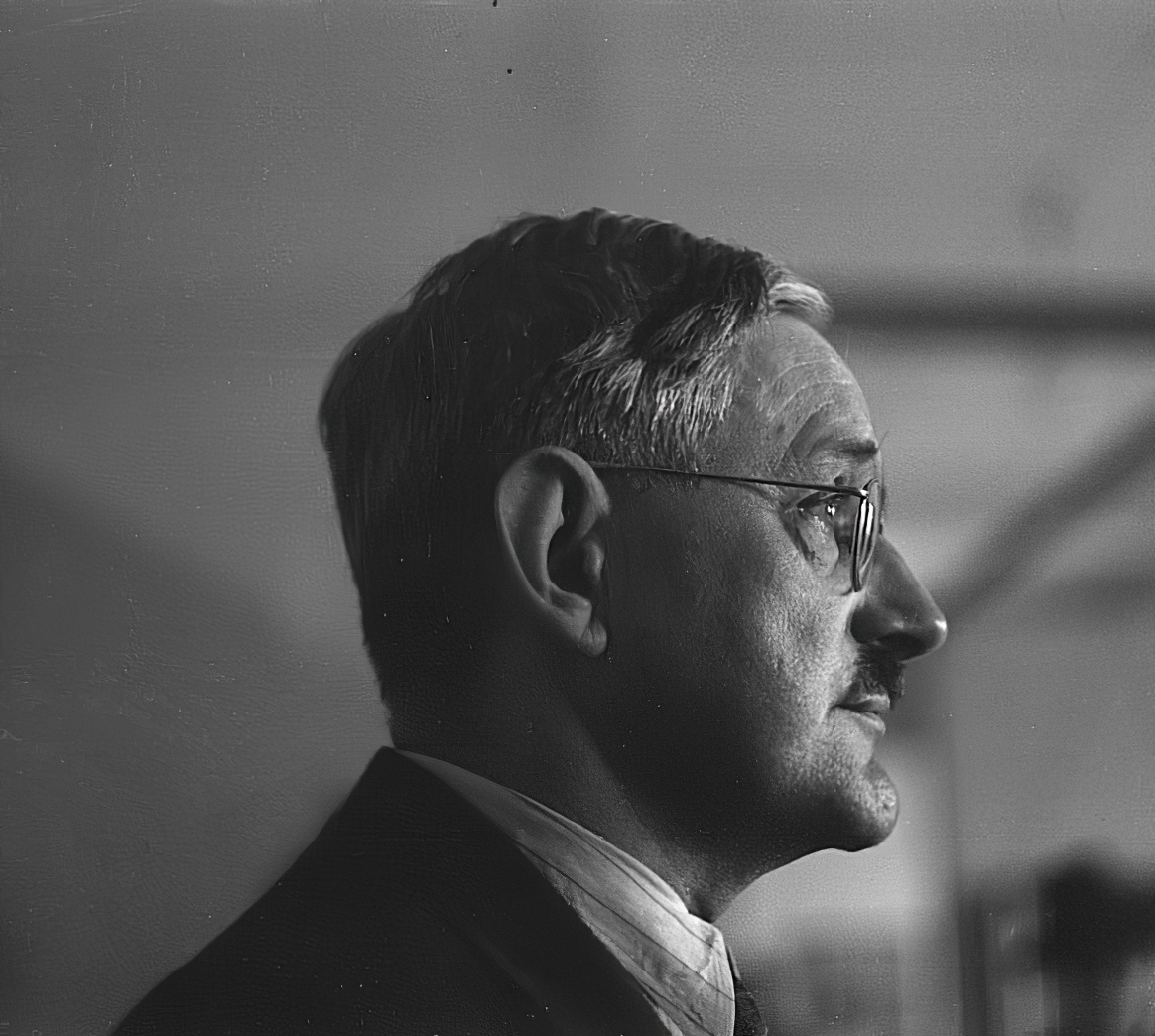
Conrad Felixmüller was a twentieth-century German artist, born Conrad Felix Müller. He is known as a painter, graphic artist, illustrator and printmaker, a representative of the New Materiality movement, who worked in the Expressionist style.
Felixmüller created about 2,500 paintings and graphic drawings, the main motif of which was the human being. The artist considered himself a socially critical expressionist, and his works reflected scenes from everyday life. In the 1930s, many of his works were confiscated by the Nazis as examples of degenerate art and destroyed. As a result of the bombing of Berlin in 1944, Felixmüller lost much of his work.
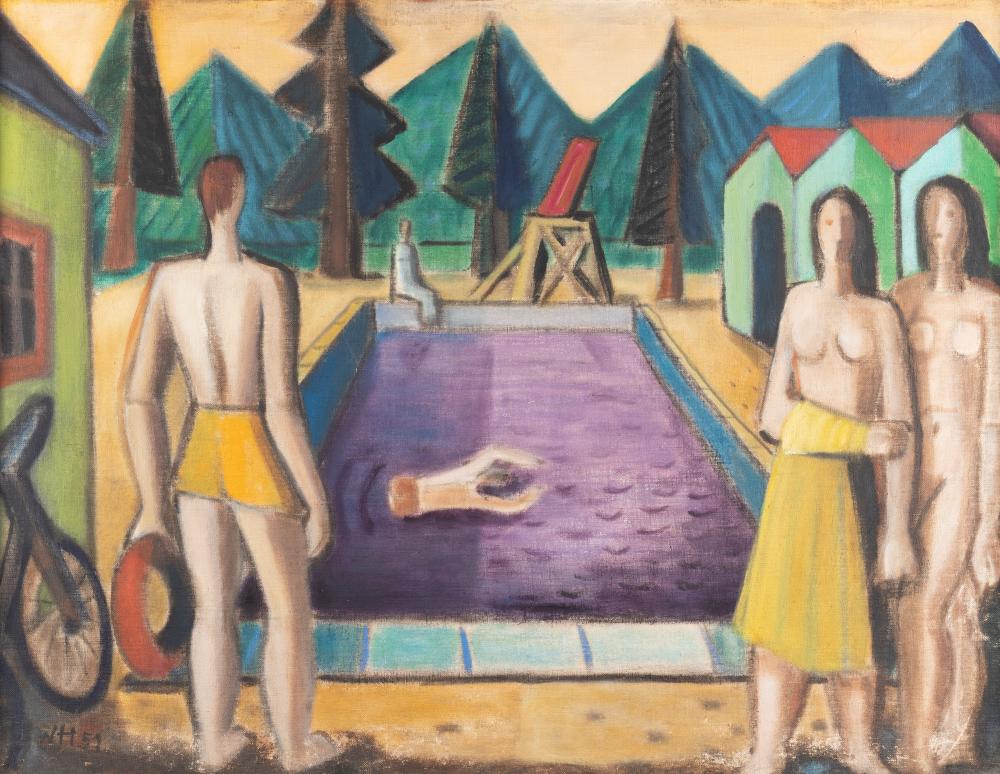
Wolf Hoffmann, also Wolfgang Hoffmann, was a German painter, printmaker, and printmaker and professor at the Academy of Fine Arts in Berlin-Weißensee.
He produced many works, mainly landscapes, figurative and floral still lifes, etchings, as well as woodcuts and linocuts.
During World War II, many of Hoffmann's works were destroyed, but during those difficult years he learned to work with ceramics and painted tiles. After 1945 he found the strength to return to painting.

Wolf Hoffmann, also Wolfgang Hoffmann, was a German painter, printmaker, and printmaker and professor at the Academy of Fine Arts in Berlin-Weißensee.
He produced many works, mainly landscapes, figurative and floral still lifes, etchings, as well as woodcuts and linocuts.
During World War II, many of Hoffmann's works were destroyed, but during those difficult years he learned to work with ceramics and painted tiles. After 1945 he found the strength to return to painting.
